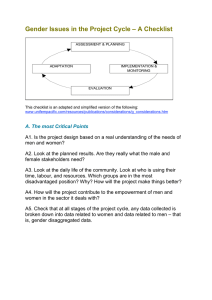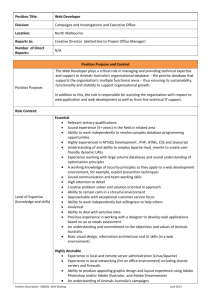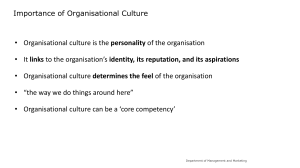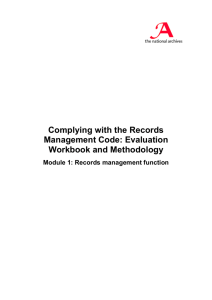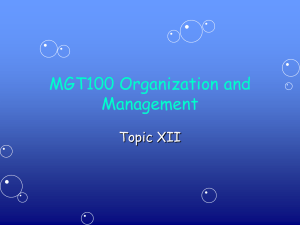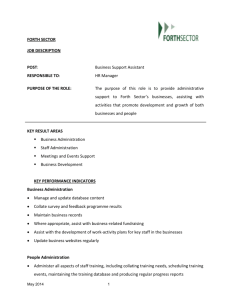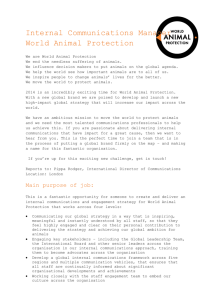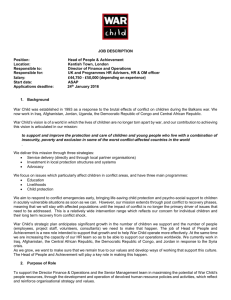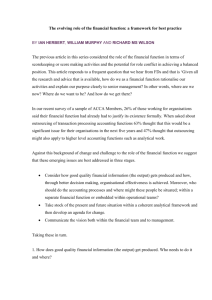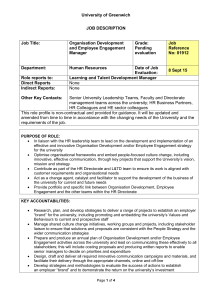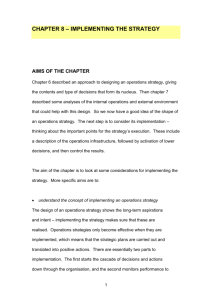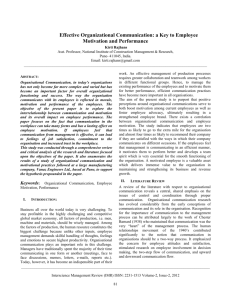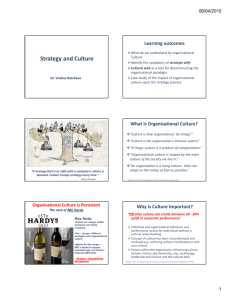– Tool 3
advertisement
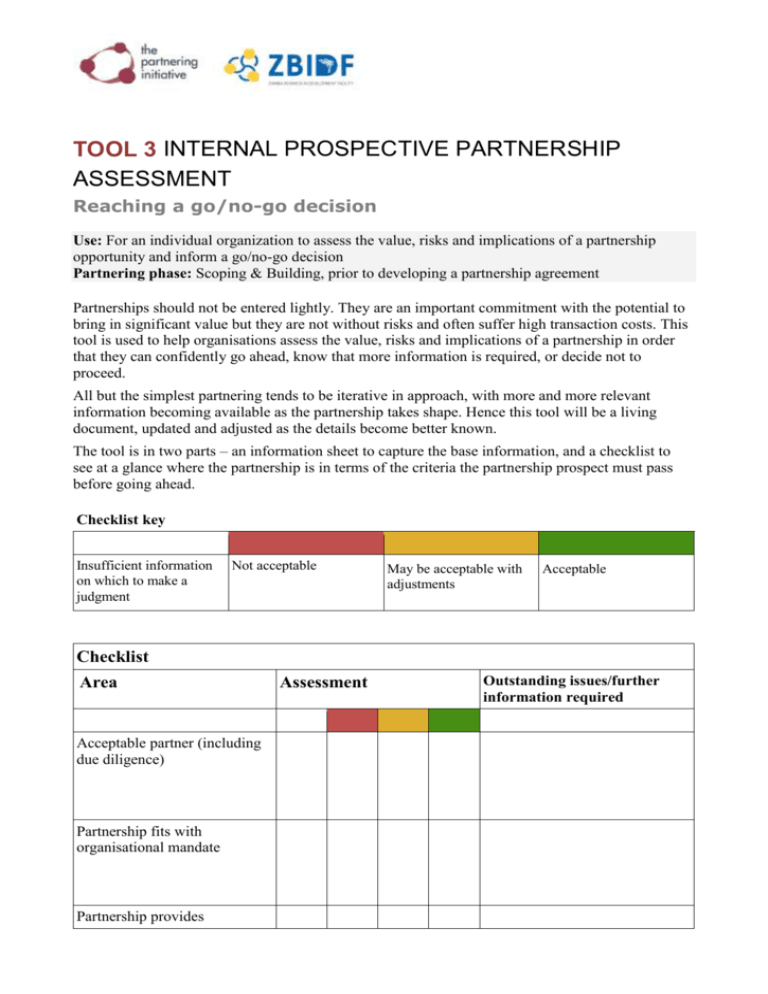
TOOL 3 INTERNAL PROSPECTIVE PARTNERSHIP ASSESSMENT Reaching a go/no-go decision Use: For an individual organization to assess the value, risks and implications of a partnership opportunity and inform a go/no-go decision Partnering phase: Scoping & Building, prior to developing a partnership agreement Partnerships should not be entered lightly. They are an important commitment with the potential to bring in significant value but they are not without risks and often suffer high transaction costs. This tool is used to help organisations assess the value, risks and implications of a partnership in order that they can confidently go ahead, know that more information is required, or decide not to proceed. All but the simplest partnering tends to be iterative in approach, with more and more relevant information becoming available as the partnership takes shape. Hence this tool will be a living document, updated and adjusted as the details become better known. The tool is in two parts – an information sheet to capture the base information, and a checklist to see at a glance where the partnership is in terms of the criteria the partnership prospect must pass before going ahead. Checklist key Insufficient information on which to make a judgment Not acceptable May be acceptable with adjustments Acceptable Checklist Area Acceptable partner (including due diligence) Partnership fits with organisational mandate Partnership provides Assessment Outstanding issues/further information required significant value / impact Costs are acceptable in relation to value gained Risks are sufficiently low or well mitigated Sufficient financial resources to implement Sufficient internal resources / capacities are available Implications are acceptable Sufficient buy-in from relevant staff / divisions / country offices Decision status as of date: Decline | Continue to pursue | Go ahead The Zambia Partnering Toolbook is available at thepartneringinitiative.org and www.zbidf.org TOOL 3 continued Information sheet Overview • Context and drivers • Vision, mission, objectives and activities • Why partner – leverage resources; combine resources to innovate; tackle complexity / transformation? • Non-partnership alternative approach (if applicable) • Expected role of organisation Prospective partner(s) • Partners’ interests / priorities • Partners’ commitment and expectations • Due diligence • Working experience of partner to date Fit • With organisational mandate • With organisational strategy • With current programmes / obligations / other partnerships Benefits / value Understanding all forms of value to the organisation: • Contribution to mission / impact for ultimate beneficiaries • Increased capacity to deliver • Increased technical expertise / knowledge • Additional resources / funds • Creativity / innovation / sustainability • Positioning / visibility • Political benefits • Positive branding / reputational • Influence • Access to new networks / constituencies • Making the organisation increasingly a ‘partner of choice’ Implications • What precedent (if any) does it set? • Obligations / commitments being made – is there an ‘exit strategy’? • Effect on other relationships / reputation • Potential unintended consequences • Accountability Costs • Analysis of transaction, implementation and possible over-run costs Risks Along with the potential benefits, the organisation needs to assess the risks for prospective engagements and consider ways to mitigate those risks. Note that the risks below are risks relating to the partnership itself. There will also be risks related to the project. • Going beyond mandate • Loss of programmatic focus • Duplication of efforts • Ability to deliver on commitments • Overlong time investment • Financial implications • Lack of sufficient capacity to deliver • Empowering others without legitimacy • Interference with natural systems / distorting the market • Compromising neutrality or independence / reputational issues • Loss of autonomy on key issues • Risk to existing relationships • Implied endorsement Practicality • Funding sources for implementation • Internal buy-in from relevant staff / offices • Sufficient resource that can be committed • Sufficient internal skills and competencies to deliver Evaluation • Clear measures of success from the organisation’s perspective Outstanding issues and next steps • Outlining what decisions / further actions are recommended, by when and by whom
